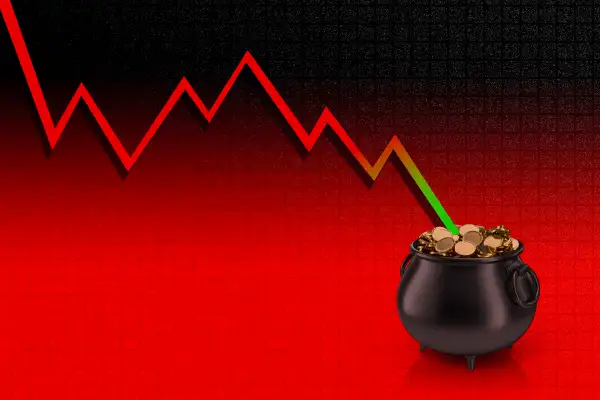Here's How Long Bear Markets Last — and How Stocks React When They End
Money is not a client of any investment adviser featured on this page. The information provided on this page is for educational purposes only and is not intended as investment advice. Money does not offer advisory services.

Investors everywhere are wondering: When will the bear market end, and just how bad will returns be during the downturn?
Bear markets, defined as when the stock market falls at least 20% from its recent peak, are often associated with recessions, but the two don’t necessarily move in tandem.
While both bear markets and recessions (loosely defined as, at minimum, a six-month stretch of economic contraction) are broadly lumped together under the umbrella of bad economic news, their divergence reflects the disparity between Wall Street and Main Street, or the stock market versus the quote-unquote real economy.
The S&P 500, a benchmark index often used as a proxy for overall market performance, first dipped into bear market territory on June 13, when it closed 21.8% down from its January 3 peak. Wall Street and retail investors alike are searching for clues about what happens next: Is the market primed to bounce back quickly? Or do stocks have further to fall? And when will they rebound?
Recessionary bear markets last longer
According to a Wells Fargo Investment Institute review of all 11 bear markets the economy has weathered since the end of World War II, the answer depends, in part, on whether the U.S. economy can avoid sliding into a recession.
While the average bear market has a 16-month duration, the Wells Fargo Investment Institute found that the time frame varies considerably depending on whether or not any given bear market coincides with a recession. Non-bear-market recessions typically last just around six months, while recessionary ones linger for an average of around 20 months. And while 20% is the minimum drop used to characterize a bear market, the S&P falls by an average of roughly 35% in a bear market.
“Being less than six months into this… I think there could be, at minimum, more volatility to come, and potentially more downside in the near term,” says Ross Mayfield, investment strategy analyst at Baird.
After a brief, sharp recession triggered in 2020 when COVID-19 shut down most business and economic activity, the market recovered from its tumble rapidly, fueled by stimulus payments and rock-bottom borrowing rates. But now that those ultra-low interest rates are climbing and all that liquidity is being drained out of the system, stocks are struggling to regain their footing.
While the most recent market drops had been cushioned by accommodative monetary policy, Mayfield points out that the central bank is unlikely to adopt a similar stance this time around as inflation continues to run near 40-year highs.
“This Fed is not on the side of markets. They're not going to be worried about asset prices going down,” he says.
The bottom line, Mayfield says, is that “time horizon matters."
Investing in a bear market
Investors can look forward to strong returns once the bear market ends. According to the Wells Fargo Investment Institute study, the average 12-month return after the end of a bear market is 43.4%. The problem, of course, is that no one knows when the bear market will come to an end.
In the meantime, people nearing retirement might want to check and make sure they’re holding enough cash. Having liquidity, in the form of cash held in high-yield savings or money market accounts, can help you avoid having to sell stocks at a loss if you have an emergency and need to access funds, and can serve as “dry powder” you can deploy if you want to buy.
"If you don't have 14 months to get back to breakeven, you should not be invested in equities," Sam Stovall, chief investment strategist at CFRA Research, recently told Money.
But for people with decades left before they hit retirement age, this could be a good time to keep — or even start — investing.
For investors who want to buy stocks, this is a time to be deliberate about how you deploy your capital. You can use a strategy like dollar-cost averaging, suggests Marguerita Cheng, a certified financial planner at Blue Ocean Global Wealth.
"The most important thing is time in the market, not timing the market," Cheng previously told Money.
More from Money:
4 Investing Moves to Make Instead of Panicking About Volatile Markets
